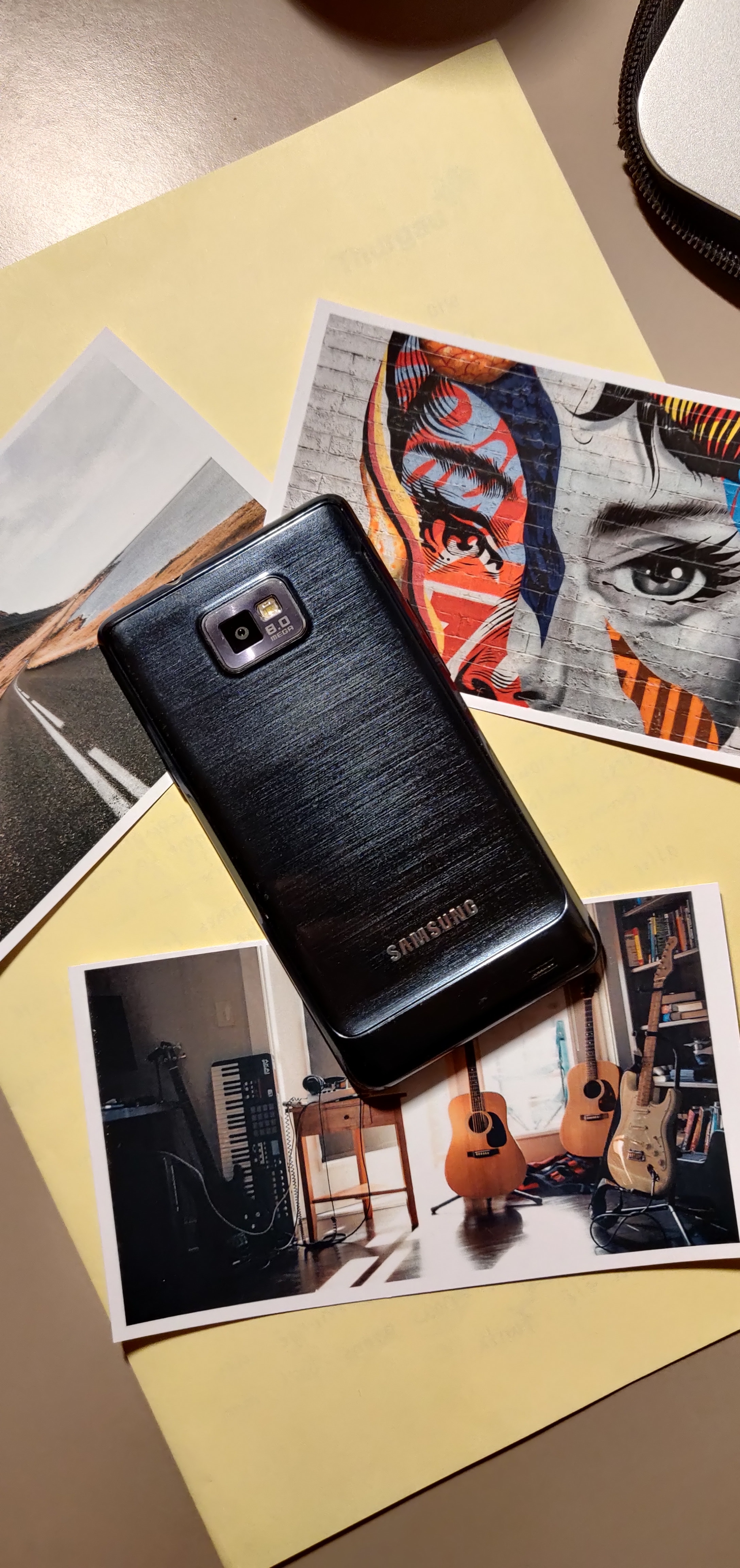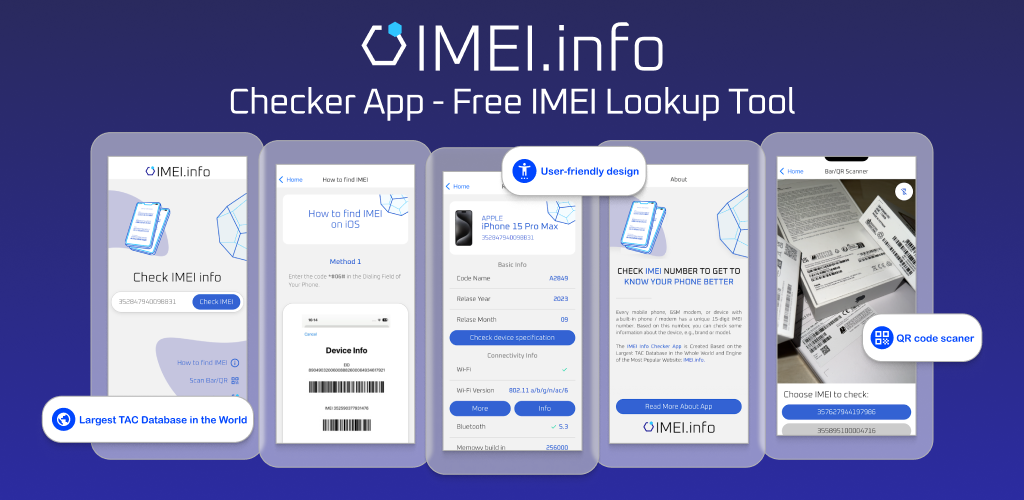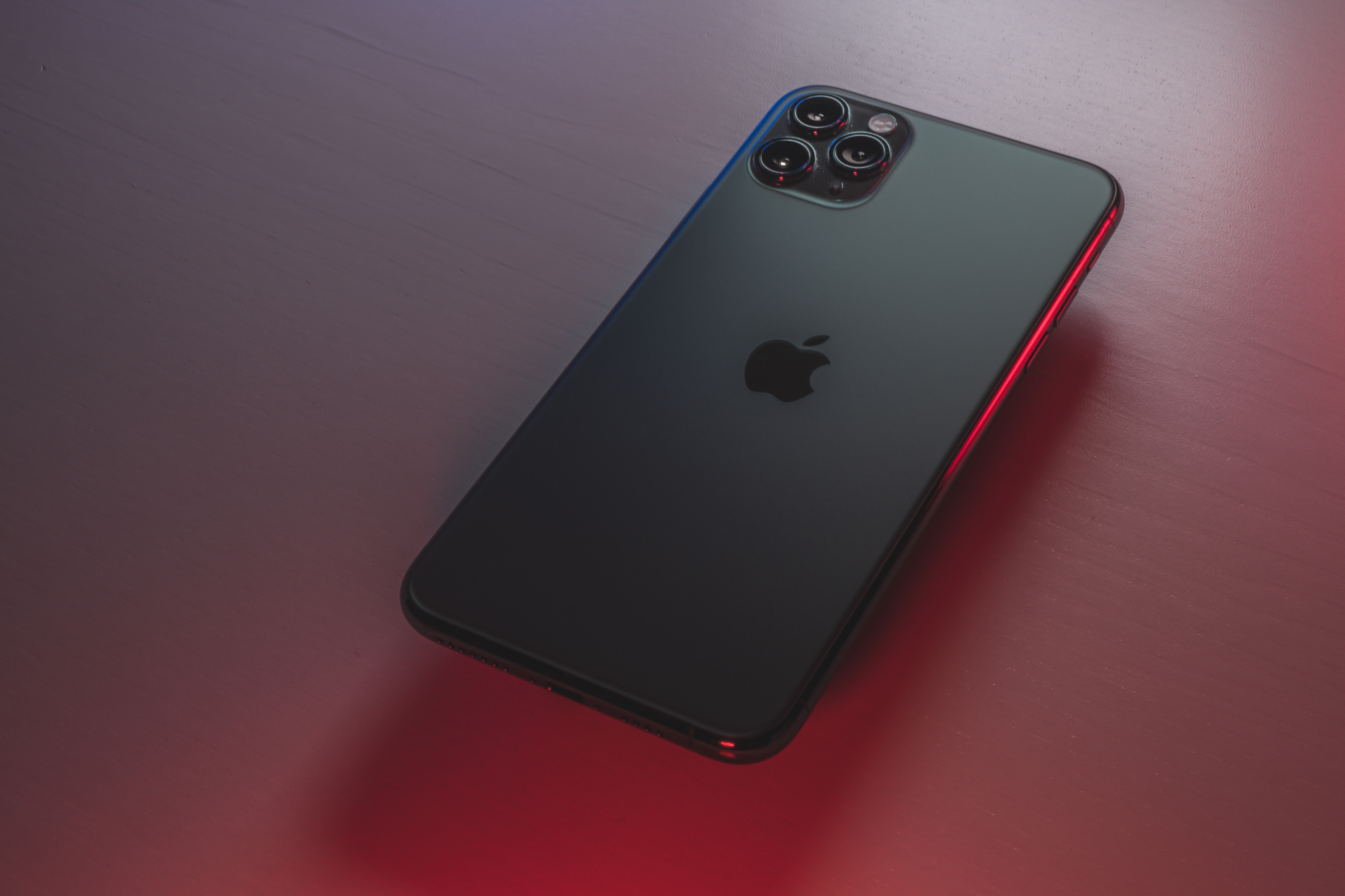In the dynamic world of design, where first impressions matter, a logo serves as the cornerstone of a brand's visual identity. It encapsulates the essence of a company, communicates its values, and leaves a lasting imprint on the minds of consumers. Crafting a memorable logo is a multifaceted endeavor, one that requires not only creative prowess but also a keen understanding of the target audience. In this context, the incorporation of feedback becomes pivotal.
The ability to gather insights from a diverse range of perspectives has been greatly facilitated by the advent of online feedback tools. This article delves into the integral role of feedback in the logo design process and explores how leveraging online tools can elevate the quality and resonance of your brand's visual representation. As businesses navigate an increasingly competitive digital landscape, the strategic integration of feedback tools emerges as a cornerstone in shaping logos that not only captivate but also connect with the ever-evolving preferences of the audience.
Ai logo maker online Turbologo provides tips on combining colors and styles.
The Importance of Feedback in Logo Design
In the realm of logo design, where creativity meets strategic communication, feedback stands out as a catalyst for refinement and innovation. A logo is not just a graphic; it is a narrative distilled into a visual symbol that conveys a brand's identity. Feedback plays a pivotal role in this intricate process by offering designers a valuable external perspective. It serves as a compass, guiding the design journey towards a destination where the visual elements align seamlessly with the brand's ethos. Without the compass of feedback, designers may inadvertently miss the mark, creating logos that fail to resonate with the intended audience.
Furthermore, the iterative nature of the design process hinges on constructive criticism and user insights. It transforms a static design approach into a dynamic, evolving strategy that adapts to the ever-changing landscape of consumer preferences. Feedback acts as a bridge, connecting the designer's creative vision with the expectations and perceptions of the audience. This symbiotic relationship between creator and consumer is vital, ensuring that the final logo not only captures the essence of the brand but also resonates with the emotions and preferences of the target market.
As technology continues to reshape the design landscape, the integration of online feedback tools amplifies the importance of this dynamic interaction. These tools facilitate a real-time dialogue between designers and their audience, transcending geographical boundaries and bringing together a global community of perspectives. In this digital age, where consumer engagement is instantaneous, harnessing the power of online feedback tools has become a cornerstone in the quest for a logo that goes beyond aesthetics, becoming a conduit for meaningful connections between brands and their audiences.
Overview of Online Feedback Tools
The evolution of technology has not only transformed the design process but has also redefined how designers engage with their audience. Online feedback tools have emerged as indispensable companions in the quest for creating impactful logos. These tools, ranging from dedicated platforms like Dribbble and Behance to social media channels like Instagram, provide designers with a direct conduit to a vast and diverse audience.
Dribbble, for instance, serves as a vibrant community where designers showcase their work and receive feedback from peers and professionals worldwide. The platform's collaborative nature fosters an environment where ideas are exchanged, and constructive critiques pave the way for design improvement.
Behance, another prominent platform, extends the scope of feedback to include not only fellow designers but also potential clients and enthusiasts. Its project-centric approach allows designers to present their work holistically, garnering insights not only on the visual aspects but also on the overall impact and resonance of the logo within a broader context.
Social media platforms, particularly Instagram, offer designers a more informal space for engagement. Here, the visual appeal of a logo can be gauged through likes, comments, and shares, providing designers with instant feedback and an understanding of how well their work resonates with a broader audience.
The integration of these tools into the design process is not just about soliciting opinions; it's about immersing oneself in a collaborative ecosystem where ideas are refined through a collective effort. By providing a global stage for showcasing work and encouraging direct interaction with the audience, these tools not only streamline the feedback process but also foster a sense of community among designers, propelling the industry forward through shared insights and collective growth. As we navigate the vast landscape of online feedback tools, it becomes evident that they serve as dynamic platforms where the synergy between creativity and community thrives, ultimately shaping logos that transcend mere aesthetics.
Integrating Feedback Tools into the Design Process
The seamless integration of online feedback tools into the design workflow is a strategic imperative for designers seeking to harness the full potential of community insights. To achieve this, designers must identify key junctures in their creative journey where external perspectives can contribute most effectively.
Early in the design process, during the conceptualization phase, feedback tools can provide valuable guidance. Sharing initial sketches or mood boards on platforms like Dribbble or Behance enables designers to gauge the initial reactions of their peers and target audience. This early input helps in shaping the foundational elements of the logo, ensuring that the design aligns with initial expectations.
As the design progresses, feedback tools can be instrumental in more granular decisions such as color palette selection, typography choices, and overall visual aesthetics. Platforms like Instagram, with its image-centric nature, allow for a quick and direct assessment of how these design elements are resonating with the audience.
Moreover, designers should approach the integration of feedback tools as an ongoing and iterative process rather than a one-time event. By incorporating feedback loops at multiple stages, designers can avoid potential pitfalls and refine their work continuously. This cyclical approach not only enhances the quality of the design but also ensures that it remains dynamic and responsive to evolving preferences.
In essence, the integration of feedback tools is not merely an add-on to the design process; it is a transformative paradigm that turns design into a collaborative endeavor. By strategically leveraging these tools at crucial milestones, designers can tap into the collective intelligence of their peers and audience, steering the creative process towards a final logo that not only meets the brand's objectives but also resonates authentically with its intended audience. As we explore the intricacies of this integration, it becomes evident that these tools are not just instruments for feedback; they are catalysts for a more inclusive and responsive design culture.
Collecting and Analyzing Feedback Effectively
The art of collecting feedback extends beyond merely accumulating comments; it requires a strategic approach to ensure that the insights gathered are meaningful and actionable. Designers must actively cultivate an environment that encourages specificity in feedback. Rather than generic statements, prompting users to articulate their thoughts on specific elements of the logo, such as color choices, symbolism, or overall clarity, enhances the value of the feedback received.
Furthermore, employing data analytics tools can elevate the feedback process to a more systematic and insightful level. These tools can assist designers in identifying patterns, trends, and common denominators within the feedback received. By quantifying responses and sentiments, designers gain a more nuanced understanding of the aspects that resonate positively or need improvement.
Platforms like Dribbble and Behance often incorporate features that allow designers to gather quantitative data, such as the number of likes, shares, or even specific reactions to different design elements. Analyzing this data empowers designers to make informed decisions about which aspects of the logo design are particularly impactful and which may require further refinement.
However, it's crucial for designers to approach data analytics with a discerning eye, recognizing that not all qualitative aspects of design can be quantified. Striking a balance between quantitative data and qualitative insights ensures a holistic understanding of the feedback received.
In the ever-evolving landscape of design, where subjectivity and creativity intersect, effective feedback collection is not a one-size-fits-all endeavor. It requires adaptability and a keen awareness of the specific objectives at each stage of the design process. As designers navigate the intricate task of gathering and analyzing feedback, they embark on a journey of continuous improvement, refining their logos with precision and purpose. In the digital realm, where information is abundant, mastering the art of effective feedback collection becomes a linchpin for creating logos that transcend individual perspectives and resonate universally.
Balancing Diverse Opinions with Brand Vision
While the input from diverse perspectives can be immensely valuable, designers must navigate the delicate task of harmonizing external feedback with the core vision of the brand. It is essential to approach feedback as a guide rather than a directive, understanding that not every suggestion aligns seamlessly with the unique identity and goals of the brand.
Designers should exercise discernment in discerning which feedback aligns with the brand's ethos and objectives and which might veer away from its intended narrative. The brand vision serves as a guiding beacon, a set of principles that define the essence of the business and its relationship with its audience. Constructive feedback should enhance and refine this vision rather than dilute or compromise it.
Moreover, effective communication is key in managing diverse opinions. Designers should transparently communicate the brand's values and strategic goals to the feedback contributors. This fosters a shared understanding, aligning the collective efforts toward a logo that not only resonates with a broad audience but also authentically represents the brand.
In instances where conflicting opinions arise, it becomes a delicate dance of weighing the merits of each perspective against the brand's overarching objectives. Successful designers skillfully navigate this balance, extracting insights that enhance the design without compromising the brand's unique identity.
Ultimately, the synergy between diverse opinions and brand vision is where a logo achieves its true resonance. It becomes a visual embodiment of the brand's narrative that not only captures the attention of the audience but also forges a meaningful connection. As designers tread the path of balancing these elements, they contribute to the creation of logos that are not only aesthetically pleasing but also carry a profound and authentic representation of the brand.
Iterative Design: Refining Based on User Input
The essence of iterative design lies in its responsiveness to user input, transforming the logo creation process into a dynamic, evolving journey. As designers receive feedback from various sources, each iteration becomes an opportunity to refine and enhance the logo's visual impact. This cyclical approach is not a mere repetition of design phases but a strategic evolution guided by the ever-expanding pool of insights.
Each round of user input offers a fresh perspective, shedding light on aspects that may have gone unnoticed or confirming the success of specific design choices. Designers adept in iterative design view each critique as a valuable nugget of information, a puzzle piece contributing to the holistic understanding of how the logo is perceived.
Moreover, iterative design is not confined to the early stages of logo development but extends throughout the entire design process. From initial concept sketches to color adjustments and final detailing, each phase benefits from the continuous loop of feedback and refinement. This dynamic interaction ensures that the logo remains flexible and adaptable, capable of responding to the evolving tastes and expectations of the target audience.
In embracing iterative design, designers acknowledge that perfection is a journey, not a destination. It's a process of evolution guided by user input, propelling the logo towards a state of optimal resonance. As designers embark on this iterative journey, they craft logos that transcend static aesthetics, embodying a living, breathing representation of the brand's identity that resonates authentically with its audience.
ience. This cyclical approach ensures a dynamic and responsive design process.
Case Studies: Successful Use of Feedback in Logo Design
Examining real-world case studies offers tangible proof of the transformative impact that user feedback can have on logo design. One illustrative example is the redesign journey of a prominent tech company's logo. The initial design, while conceptually strong, faced challenges in user reception. By leveraging online feedback tools, the design team gathered insights from users across diverse demographics.
Through careful analysis of the feedback, the team identified specific pain points, such as color preferences and iconography concerns. The iterative process that ensued involved multiple design revisions, each informed by the collective input received. The result was not just a visually appealing logo but one that resonated more profoundly with the company's target audience.
Another noteworthy case study involves a startup's venture into logo creation. Through the use of online platforms like Behance and social media, the company engaged with potential users from the early stages of logo conception. This transparent and inclusive approach allowed the startup to gauge the initial impact of their branding choices and make adjustments based on real-time feedback, ultimately leading to a logo that garnered positive attention upon launch.
These case studies underline the importance of user feedback as a catalyst for positive change in logo design. They demonstrate that successful logos are not born overnight but evolve through an iterative and responsive process guided by the insights and preferences of the intended audience. By learning from these real-world examples, designers can glean valuable lessons on how to effectively integrate user feedback into their own creative processes, ensuring that the end result is not just visually striking but also resonant with the target audience on a deeper level.
Best Practices for Managing Online Feedback
Effectively managing online feedback is an art that requires a delicate balance of responsiveness, transparency, and adaptability. One fundamental practice is to set clear objectives for the feedback process. By defining specific questions or areas of focus, designers guide contributors to provide insights that align with the project's goals. This clarity not only streamlines the feedback but also ensures that it is purposeful and actionable.
Active engagement with the audience is another crucial practice. Acknowledging and responding to feedback, whether positive or constructive, fosters a sense of community and collaboration. This open communication not only validates the contributors but also encourages a continuous dialogue that can significantly enrich the design process.
Moreover, managing online feedback involves distinguishing between subjective preferences and objective concerns. While subjective opinions provide valuable insights into personal preferences, objective concerns related to functionality, clarity, and scalability should be prioritized. This discernment allows designers to extract actionable insights that contribute meaningfully to the refinement of the logo.
Establishing a feedback timeline is also beneficial. Designers should clearly communicate when and how feedback will be collected and integrated into the design process. This proactive approach manages expectations, creating a structured and efficient feedback loop.
Additionally, designers should leverage the strengths of different online platforms strategically. Tailoring the type of content shared and the level of detail provided based on the platform's audience and features optimizes the feedback collection process.
As the digital landscape evolves, designers must remain adaptable to emerging trends and tools in online feedback management. Staying abreast of the latest developments ensures that designers can harness the full potential of online platforms, maximizing the effectiveness of the feedback loop.
In essence, effective management of online feedback is not just about collecting comments; it's about creating a collaborative ecosystem where insights are valued, and the design process becomes a shared journey. By incorporating these best practices, designers can navigate the complexities of online feedback with finesse, ultimately contributing to the creation of logos that not only meet design objectives but also resonate authentically with the audience.
The Role of A/B Testing in Logo Refinement
A/B testing, a widely employed technique in the realm of web and product design, has found a meaningful application in logo refinement. This method involves presenting two or more versions of a logo to different segments of the audience and measuring their responses to determine which version performs better in achieving predefined objectives.
In logo design, A/B testing allows designers to systematically evaluate variations in color schemes, typography, iconography, and overall layout. By exposing different iterations to distinct audience groups, designers can discern which elements resonate more effectively with the target demographic. This empirical approach transforms subjective design decisions into data-driven insights, ensuring that the final logo is not only visually appealing but also aligns with the preferences of the majority.
The process typically involves presenting versions of a logo to users in a controlled environment, often through online surveys, focus groups, or within the context of a website or application. Metrics such as user engagement, click-through rates, and overall brand perception can be measured, providing designers with quantifiable data on the performance of each variant.
A/B testing is particularly beneficial when designers face decisions that may have subjective outcomes. For instance, choosing between two color palettes or testing the impact of different taglines can be challenging based solely on intuition. A/B testing provides a methodical way to validate these choices, ensuring that design decisions are rooted in empirical evidence rather than personal bias.
However, it's crucial to approach A/B testing with a clear understanding of its limitations. While it excels in gauging user preferences quantitatively, it may not capture qualitative aspects such as emotional resonance or long-term brand perception. Therefore, A/B testing should complement, not replace, other feedback mechanisms in the logo design process.
In conclusion, the role of A/B testing in logo refinement is transformative, offering designers a data-driven compass to navigate design decisions. By systematically comparing variations and measuring user responses, A/B testing empowers designers to make informed choices, contributing to the creation of logos that not only visually captivate but also statistically resonate with the target audience.
Legal and Ethical Considerations in Using Feedback
While the integration of feedback is an invaluable aspect of logo design, designers must navigate a landscape fraught with legal and ethical considerations. One primary concern is the respect for intellectual property rights. Designers should be vigilant in ensuring that the feedback they receive, especially visual suggestions or conceptual ideas, does not infringe upon existing trademarks or copyrights. Using feedback that inadvertently incorporates elements from other designs can lead to legal repercussions and compromise the integrity of the logo creation process.
Transparency in the use of feedback is also paramount. Designers should be explicit about the origin of the ideas and suggestions incorporated into the final logo. This not only upholds ethical standards but also ensures that contributors are appropriately credited for their input. It fosters a sense of trust within the design community and among users who engage in the feedback process.
Moreover, designers should be cautious about misleading practices, such as falsely attributing certain design decisions to user input. Authenticity and integrity in the design process are critical for maintaining the trust of both the client and the audience. Misrepresenting the source of design elements can erode this trust and tarnish the reputation of the designer and the brand.
Privacy concerns also come into play when collecting feedback online. Designers must adhere to data protection regulations and ensure that user information is handled responsibly. Clearly communicating how user data will be used and protected fosters a sense of security among contributors and reinforces the ethical foundation of the feedback process.
In essence, designers must tread carefully, balancing the need for constructive feedback with a commitment to legal and ethical standards. By navigating these considerations with diligence and transparency, designers contribute to a design environment built on trust, respect, and the responsible use of user input.
Conclusion
In the dynamic landscape of logo design, where creativity meets user engagement, the integration of online feedback tools emerges as a game-changer. As we traverse the intricate journey from conceptualization to refinement, the significance of user insights cannot be overstated. Online feedback tools serve as bridges connecting designers with a global audience, turning the logo creation process into a collaborative venture.
The iterative nature of design, guided by the diverse perspectives offered through these tools, transforms logos into dynamic entities that evolve with the pulse of audience preferences. The success stories shared in case studies exemplify how user feedback, when harnessed strategically, leads to logos that not only capture attention but also forge authentic connections with the intended audience.
However, this journey is not without its challenges. Designers must navigate legal and ethical considerations, ensuring that the feedback process adheres to principles of transparency, privacy, and intellectual property rights. The delicate balance between diverse opinions and brand vision underscores the need for discernment in the integration of feedback.
As we conclude this exploration of using online feedback tools to refine logo design, it becomes evident that this approach is not merely a trend but a fundamental shift in the paradigm of creative collaboration. Designers equipped with the knowledge of best practices, A/B testing methodologies, and a keen awareness of legal and ethical considerations stand poised to shape logos that transcend aesthetics, embody brand narratives, and resonate authentically with audiences worldwide. The integration of online feedback tools, when conducted with finesse and purpose, propels logo design into a realm where innovation meets inclusivity, ensuring that each logo is not just a visual representation but a meaningful and impactful cornerstone of a brand's identity.

Revolution on the Used Device Market: How Automation is Leading the Way
The main trend in the used device market is automation. All processes that are done manually have one common drawback: human errors.

What are the advantages of using a woman owned staffing agency?
While selecting a staffing agency in the current evolving and inclusive business environment the significance of diversity and equality cannot be ignored. It has become more evident than before. Businesses can actively add to this objective and enjoy an inclusive and gender equal workforce by partnering with a women recruitment agency. Teaming up with an agency can help you enjoy a completely unique perspective about recruitment, gender diversity and values to the hiring process.

The Art of Selecting the Perfect Bouquet for Every Occasion: A Comprehensive Guide
In the world of floral gifting, selecting the perfect bouquet is an art form that goes beyond simply choosing pretty flowers. Each occasion carries its own significance and sentiment, and the right bouquet has the power to convey exactly the message you intend. Whether you're celebrating a joyful milestone, expressing condolences, or simply saying "I love you," understanding the nuances of flower selection can elevate your gift to a meaningful expression of emotion. In this comprehensive guide, we'll delve into the art of selecting the perfect bouquet for every occasion, offering expert tips and insights to help you navigate the world of floral gifting with confidence and flair.

Elevate Your Scent and Beauty Game: Aroncloset.com Unveils Perfume and Makeup Collections in Saudi Arabia
Welcome to the heart of sophistication and elegance in personal care! In this guide, you'll dive into the world of Aroncloset.com, Saudi Arabia's newest beacon of luxury for perfume and makeup enthusiasts. Explore how this platform redefines beauty with its curated collections, offering an exquisite selection of fragrances and makeup to suit every taste. From classic brands to niche gems, Aroncloset.com promises a personalized, inclusive experience that elevates your beauty routine. Read on to discover how Aroncloset.com can transform your grooming rituals with unparalleled elegance and style.

How to Check Recent Activities on Your Phone?
In our interconnected digital landscape, smartphones have become extensions of ourselves. They serve multiple purposes, from communication and entertainment to supporting our work. But have you ever pondered your phone's daily routines? Maybe you are keen on understanding how your time is allocated each day or discovering which apps dominate your screen time. There's also the valid concern of safeguarding the security and privacy of your digital world.

How many eSIMs can be used in iPhone?
Are you looking to streamline your mobile experience with an eSIM for your iPhone? The advent of eSIM technology has revolutionized the way we connect, allowing for a more seamless and efficient use of our devices. With an eSIM iPhone, you can forget about the hassle of physical SIM cards and enjoy the benefits of multiple network plans on a single device. But how many eSIMs can an iPhone support? And how do you go about adding an eSIM to your iPhone? In this article, we'll dive into the ins and outs of eSIM capabilities on your SIM iPhone, providing you with a step-by-step guide to getting set up. Keep reading to unlock the full potential of your iPhone with eSIM technology and learn how to enhance your connectivity with ease.

IMEI Info Checker App
The awaited moment has arrived! After a period of anticipation, we take immense pride in announcing the launch of the IMEI Info Checker App, marking a pivotal moment in accessing concealed mobile device information. In today's digitally intertwined landscape, understanding your device's nuances is pivotal. This long-awaited unveiling undoubtedly simplifies access to concealed information about any mobile device. Soon available on the App Store for iOS and the Play Store for Android, this app promises a transformative shift in how users interact with their device data.

iPhone GSX Check
Are you seeking essential details about your iPhone's carrier network, warranty status, and other critical information? The iPhone GSX Check provides comprehensive insights into various aspects like simlock network, Find My iPhone status, warranty info, and more.


















